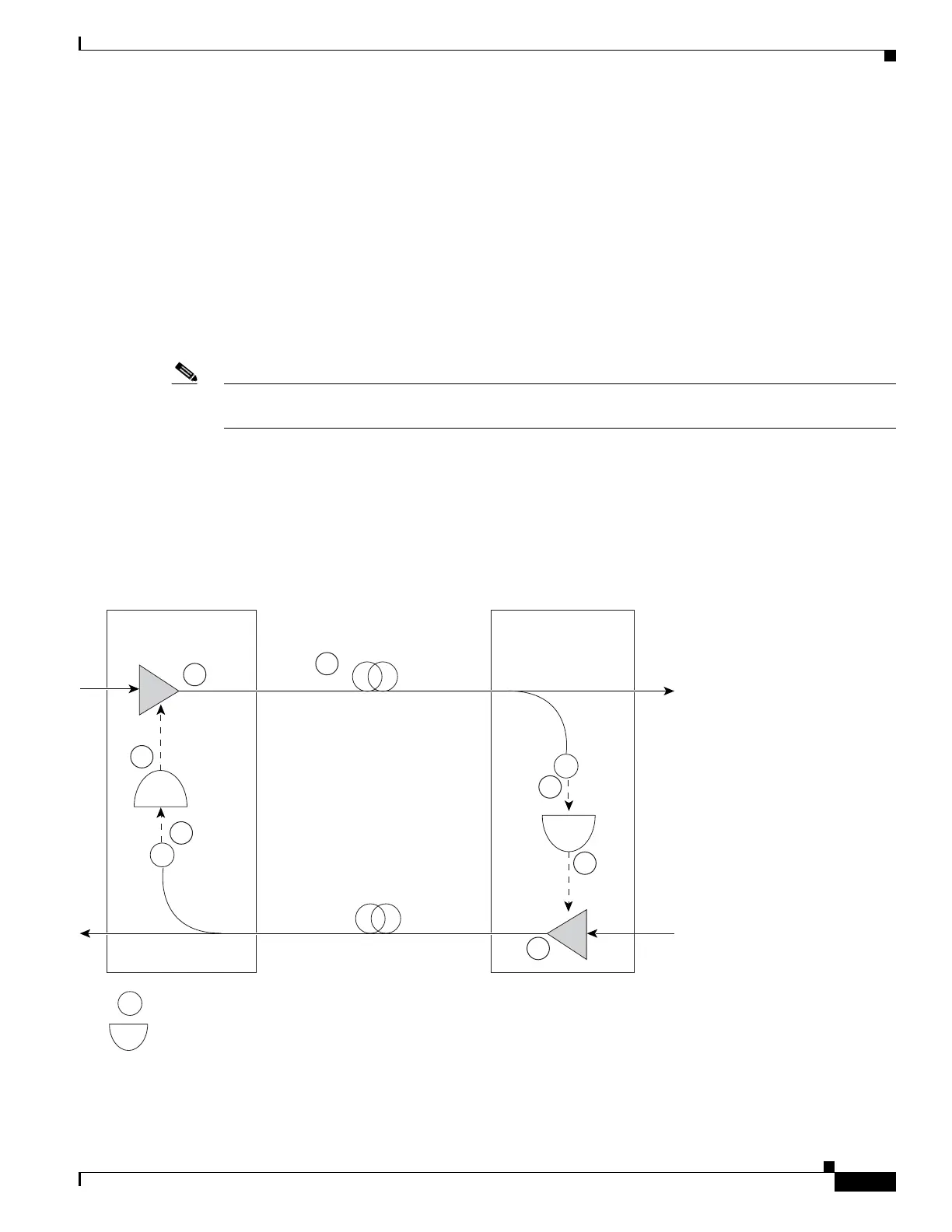10-27
Cisco ONS 15454 DWDM Reference Manual, R8.5
78-18343-02
Chapter 10 Network Reference
10.7.3 Fiber Cut Scenarios
8. On the OPT-AMP-L card, the simultaneous LOS-O and LOS-P detection triggers a command to shut
down the amplifier. CTC reports an LOS alarm (loss of continuity), while LOS-O and LOS-P are
demoted. Refer to the Cisco ONS 15454 DWDM Troubleshooting Guide.
9. The OPT-AMP-L card amplifier is shut down within one second.
10. The OSCM card laser is shut down.
When the fiber is repaired, either an automatic or manual restart at the Node A OPT-AMP-L card
transmitter or at the Node B OPT-AMP-L card transmitter is required. A system that has been shut down
is reactivated through the use of a restart pulse. The pulse indicates the optical path is restored and
transmission can begin. For example, when the far end, Node B, receives a pulse, it signals to the Node B
OPT-AMP-L card transmitter to begin transmitting an optical signal. The OPT-AMP-L card receiver at
Node A receives that signal and signals the Node A OPT-AMP-L card transmitter to resume transmitting.
Note During a laser restart pulse, APR ensures that the laser power does not exceed Class 1 limits. See the
“10.7.2 Automatic Power Reduction” section on page 10-19 for more information about APR.
10.7.3.5 Scenario 5: Fiber Cut in Nodes Using DCN Extension
Figure 10-18 shows a fiber cut scenario for nodes that do not have OSC connectivity. In the scenario,
references to the OPT-BST cards refers to the OPT-BST, OPT-BST-L, OPT-BST-E, and the OPT-AMP-L,
OPT-AMP-C, and OPT-AMP-17-C cards when provisioned in OPT-LINE mode.
Figure 10-18 Fiber Cut With DCN Extension
P
P
P
= power monitoring photodiode
= logical AND function
X
7
1
6
5
2
3
4
159799
Node A
Side B
Node B
Side A

